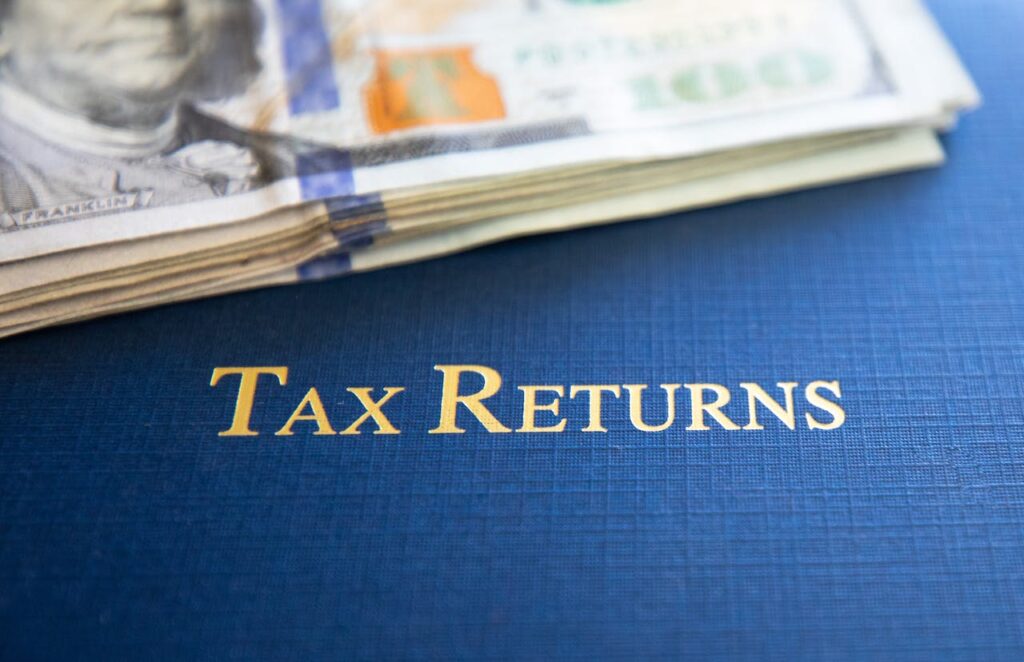This week, the IRS announced they are delaying implementation of a rule change that would have required more 1099-Ks to be issued to small businesses, gig workers and those with side hustles earning $600 or more. This is big news for all tax filers who receive business income for their goods and services via payment apps and online marketplaces like Venmo, CashApp, Etsy and Airbnb, among others.
The change might have resulted in 44 million more 1099-K forms being sent in January to such filers, including small business owners, freelancers, those with side hustles and gig workers. per CNN Business news.

Photo by Mark Youso: https://www.pexels.com/photo/tax-returns-with-portfolio-irs-form-1040-and-cash-15116663/
The IRS shook up the game plan for 2024, too. It said it is planning to start with a $5,000 threshold for 2024 to phase-in the law. The new, two-year phase in, according to the IRS, will allow the IRS to address complex administrative challenges and educate more taxpayers as it moves toward the $600 limit in the future.
Tuesday’s game changing move by the IRS means that people aren’t going to be flooded with 1099s next year or even in 2025 for the 2024 tax year. Important to note, the tax rules haven’t changed based on the IRS announcement Tuesday. “All income, no matter the amount, is taxable unless it’s excluded by law whether a Form 1099-K is sent or not,” the IRS stated Tuesday.
The IRS did not disclose how it reached the $5,000 threshold for the phase in for 2024 activity.
“Taxpayers should be aware that while the reporting threshold remains over $20,000 and 200 transactions for 2023, companies could still issue the form for any amount,” the IRS stated Tuesday.
IRS officials said some taxpayers will still get a 1099-K next year for the 2023 tax year. For example, if the taxpayer faced what’s called “backup withholding” on a payment platform for refusing to supply the company with taxpayer ID information, such as a Social Security number.
The new issuing of 1099-K forms, according to the IRS, applied to “anyone who’s using payment apps or online marketplaces to accept payments for selling goods or providing services. This includes people with side hustles, small businesses, crafters, and other sole proprietors.”
But the $600 threshold also would have included, according to the IRS, “casual sellers who sold personal stuff like clothing, furniture and other household items that they paid more than they sold it for.”
Another point of confusion: You could get a 1099-K for selling more than $600 in goods whether you made a profit or took a loss. “Selling items at a loss is not actually taxable income but would have generated many Forms 1099-K for many people with the $600 threshold,” the IRS stated Tuesday.
The IRS on Tuesday said it will have an “Understanding Your Form 1099-K” webpage at IRS.gov to help taxpayers who don’t know what to do with a 1099-K or receive one in error next year. Here is the updated information from the IRS. Additional fact sheet information from the IRS is here.

Image by WOKANDAPIX from Pixabay
Stay Nimble
Something I’ve learned about planning ahead is that outside variables can impact our plans. This change in 1099K submissions is an example.
Legislative changes can impact your plan. It’s important to stay nimble and adjust your plans as needed. As much as you may wish for a “once and done” aspect to your plans, situations change and it’s important you adjust and change too!
I’m thankful for each and every one of you. Reach out to work your plan! Send me an Email or check out the website @ The Living Planner Always remember “Courage is grace under pressure.” -Ernest Hemingway You can do it! ❣️Lynn
#PlanfortheUnplanned

